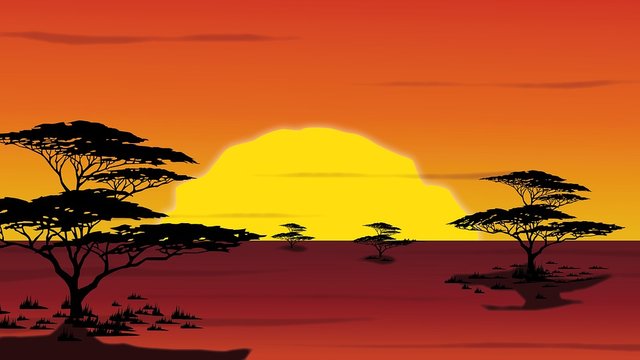The Importance of Archetypes in the Final Battle of the Lion King
Through the thick jungle, past the grasslands, and into the savannah lies Pride Rock, the home of Simba, in Disney’s The Lion King. The story follows the young lion as he runs away after he believes he is responsible for his father’s death and after his uncle Scar assumes the role as king of Pride Rock. Years later, Simba returns to face Scar and take his rightful throne. At this point, Simba learns Scar is the murderer of Mufasa, Simba’s father, and the final battle scene occurs where Simba challenges Scar. In the movie, there are many scenes in which there are symbols that stand for something of a larger picture, that are hidden. In the final battle, the present archetypes convey the significance of the scene, that Simba fulfills his destiny in becoming the true king of pride rock as he removes Scar from his position of power. Both archetypes alluding to Scar’s downfall and those hinting at the birth of a new era under Simba exist in the battle.
Fate is an idea that everything is preplanned and there is no avoiding the future since everything is cemented. This idea applies to Scar and his reign as king at Pride Rock; his downfall is inevitable. Certain images and symbols allow viewers a preview of what is about to happen to scar as the final battle occurs. As Simba and Scar climb to the highest peak, fire is seen below them. The fire symbolizes both Scar and his life and reign as king. Scar is a hateful, spiteful, and power-hungry lion who took his brother’s life just to obtain power. The fire evokes scar’s evil and savage nature. The fire also shows hell and damnation eluding to the evil king’s era of power is coming to a close. Fire can also symbolize rebirth as a phoenix rises from the ashes anew. The fire seems to engulf Scar, his hatred, and the hunger and the dark life the population at Pride Rock now lives in, and destroys it as fire often does. Another set of archetypes prevalent in the final battle are all the colors shown, especially in the fire. Viewers see red and black all throughout this scene in the fire, molten embers, and the sky. The red instills and reinstates the fire is for Scar’s hatred and evil and also that it destroys and conquers Scar and his reign. The black shows death and doom that will befall upon Scar. Many archetypes in the final battle are a part of the larger picture, one that shows Scar’s era is closing. Others show that Simba shall rise to the throne.
As the movie progresses, viewers see Simba, with an assist from archetypes, open the gate to the new era, a good era for Pride Rock as he assumes the role of King. One archetype that depicts the idea that Scar’s era of darkness is over, and Simba’s is beginning, is the rain storm. Rain and much of water symbolizes purity and freshness. The rain in the scene, that occurs after Simba has won the battle against his uncle, shows the pain of the animals is over. The rain purifies the land and restores it. The storm puts out the fire that destroyed much of the area and burned Scar’s reign as king, showing things are settled now. Drops of rain that fall from the sky over Pride Rock wash away the dark, the hunger, the hatred, and all the other emotions and feelings the animals had prior to Simba’s epic return. Another symbolic image is Simba’s ascent up the highest peak after his battle. This action announces a new king, a good king has come to save the animals. Stepping up the rock subtly inducted Simba as king, even though no introduction or ritual was needed, for he was born the inheritor of the land, a successor to the great King Mufasa. Next, colors shown in the scene bring out a deeper meaning. There are oranges and Greens present in the battle. Orange is vivid in the battle, standing for pride and ambition of Simba. The soon-to-be king knew that the era of Scar needed to end and be replaced to better the land and the life for everyone. The pride and ambition to take the role and live up to the expectations of the strong lion king are among Simba in this scene. Another assortment of colors, the greens, are shown at end of the scene, following the battle. These varying shades all stand for life and fertility returned to the land after the new king comes to power. The green reinstates that the new era is a good era filled with hope after a dark time. Finally, the stars are symbolic in this scene. Stars show guidance, and they do just that for the new king. The stars are believed to be great kings of the past looking down upon their old kingdom, as explained to Simba by his father. After his death, Mufasa joined this group and became a star looking down upon his son. Stars are significant to Simba becoming king, as they show his reign is not a solo job, rather he will be shaped and formed to be the best king he can, for his people, by the guidance he receives from the past leaders.
The final battle is the climax of The Lion King, and it is filled with so much emotion and feeling that is hard to capture through merely watching the film. Through analyzing the archetypes, viewers can see the full meaning behind the powerful and moving movie. Everything from the colors, to actions such as an ascent, to objects like stars and rain, carry a heavier, much more mature meaning. The final battle scene is a symbolic conclusion, with its meaning expressed in symbols throughout, to Disney’s The Lion King.
